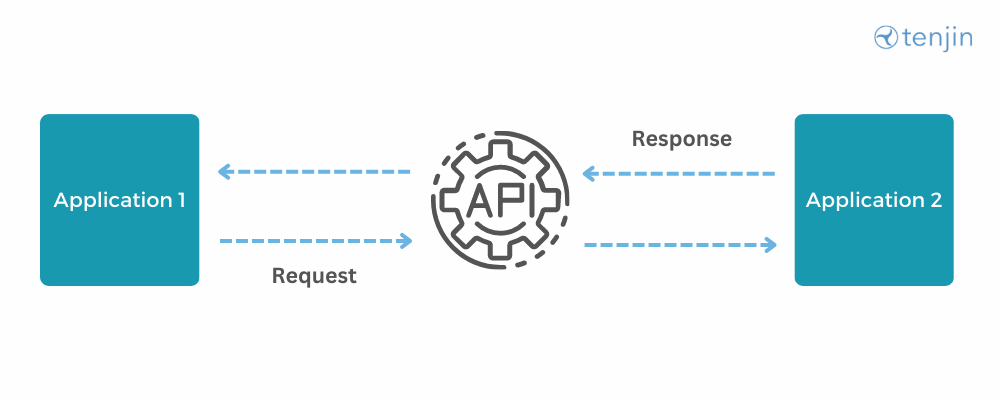What does API mean?
An API is an abbreviation for Application Programming Interface. The word Application describes any software or computer program, and the word interface is the connection between the two different applications in question. This connection (or interface) is how the communication is carried out between various applications using a combination of requests and responses.

What is an API used for?
In simple words, an API is a set of functions and procedures that is used to transport data from one application to another. This data is usually the ‘end product’ of the other app or service's existing feature. Thus, using an API saves developers a substantial amount of time and hassle since they now don’t have to write the code for pre-existing features from scratch, and can instead request the feature from another application or system through an existing API.
What is an API example?
To give you a familiar example of an API, think about booking airline flights through third party websites such as Skyscanner or Kayak. After filling out your preferences for dates, departure and arrival cities,etc the third party website has to interact with the airline’s website to check flights that match your preferences. This interaction is done through an interaction with the airlines API.
What APIs does Tenjin have?
The Tenjin Reporting Metrics API and the Campaign Management API are some of the most widely used API examples for Tenjin customers. Most software-as-a-service (SaaS) companies provide APIs that developers can use to write code which posts data and gets data from the provider’s endpoint.
Why is an API used?
APIs are used most commonly to help developers easily integrate new applications into their existing database architecture, which in turn helps the business and IT teams to work together more efficiently. Businesses need to make changes quickly in response to changes in the digital markets, which can be executed by using APIs effectively.